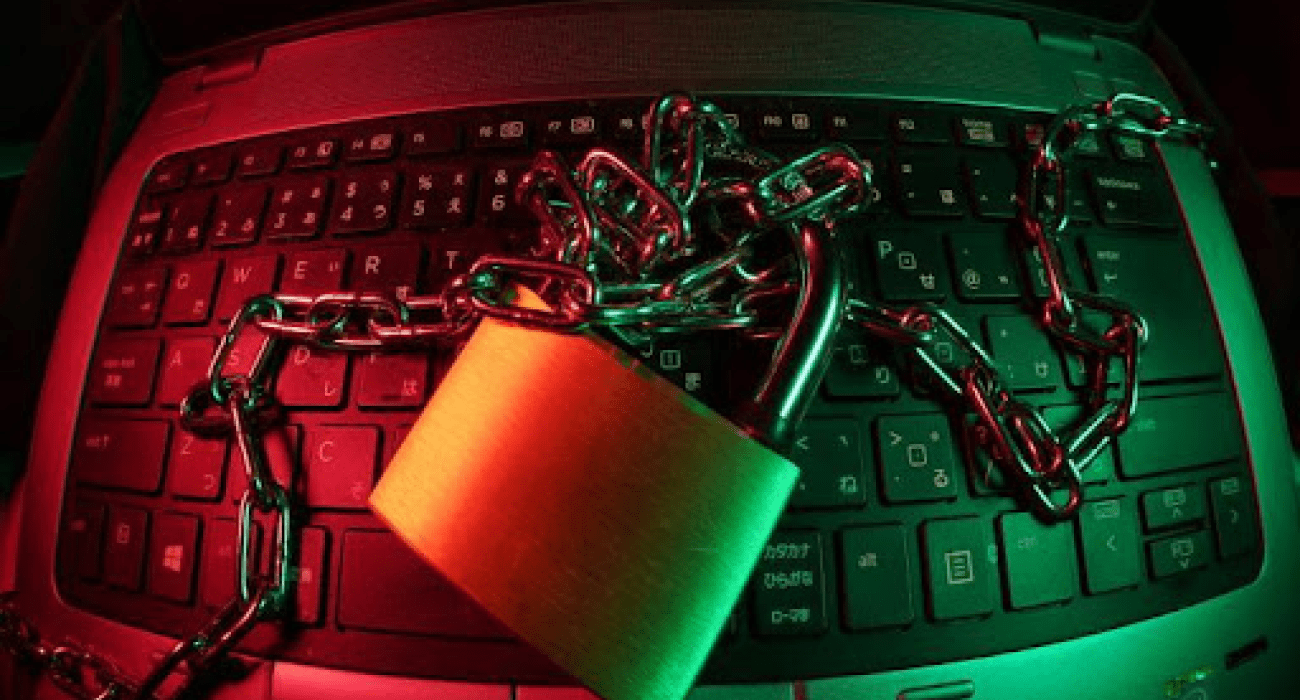There has never been a more critical time to strengthen cybersecurity. There has been an exponential increase in unique digital threats over recent years. Additionally, hackers are using more advanced tools and tactics — including AI — so conventional perimeter security tactics have become obsolete.
The zero trust principles can give organizations the tools and mindset they need to stay safe in today’s threat landscape. What is zero trust and how does it work?
What is Zero Trust security?
The zero trust security framework protects networks by treating all activity, users and programs as if they could be a threat. Even known applications and accounts must be verified repeatedly to ensure they are not compromised.
Zero trust evolved from the old castle-and-moat approach to cybersecurity, which defended against outside activity but implicitly trusted inside action. This is no longer a viable approach to security — hackers today have access to more advanced tools and strategies and are adept at gaining access to organizations’ internal systems. The most common type of cyberattack today — social engineering and phishing — is specifically designed to gain access to trusted users’ login credentials and data.
The zero trust framework has emerged as the most secure cybersecurity approach to date. It includes some core principles and concepts organizations can use to shape their unique cybersecurity strategy.
How does Zero Trust work?
Zero trust security eliminates all implicit trust on a given network, including everything from employee accounts to app activity, data access and more. Hackers can’t exploit trust if none is given to anything on a network.
A zero trust strategy treats all network activity as a potential threat. Before any app or user gets permission to access the network, it is authenticated and verified as safe, then monitored and continuously verified as it moves through the network.
To illustrate how zero trust works in practice, imagine a marketing employee logging onto their computer in the office. The marketer must first enter their login credentials to get into the computer. Then they might start their day by checking their work email. Before the marketer can access their email, they have to enter a unique set of login credentials with multi-factor authentication.
When the marketer enters their email address and password, they also receive a text message containing a one-time code to verify it is a legitimate login attempt. The marketer enters the verification code to confirm their identity, then they are allowed into their email account.
While the marketer is checking their emails, they see a message appearing to be from their supervisor. The message doesn’t have the supervisor’s usual email signature. Still, it sounds urgent and instructs the marketer to open a link to a page where they must submit a report the supervisor needs, including the marketer’s employee login credentials.
This phishing message tricks the marketer into giving away critical network access data. The zero trust security measures come into play when employees stumble on messages like this. The marketer might fall for the trick and open the malicious link in the phishing email. If they do, firewall protocols or antivirus programs would recognize the page's potentially harmful content and block it from opening.
5 Core Zero Trust principles
Different organizations implement zero trust tactics in various ways, but there are always a few core zero trust principles to keep in mind. These principles form the foundation of the zero trust framework and outline how organizations can use it to protect their networks and data.
1. Least privilege for all users
The first main principle of zero trust security is least privilege for all. This means only giving users the minimum amount of access they need. For example, an HR consultant’s account does not require customer or IT data access, so their account should be locked out of those parts by default.
The rule of least privilege minimizes what a hacker could do if someone’s account were compromised. If a user’s account can’t access most of the network by default, it significantly reduces the maximum damage a hacker could do with those login credentials.
It is essential to note this applies to all users, including c-suite personnel. Hackers frequently target high-level employees, betting their credentials will give them the most access to the organization’s network. A zero trust strategy accounts for the heightened risk facing high-level employee accounts by minimizing their entry, as well.
2. Suspicious until proven safe
The zero trust approach to network traffic is much like a locked-room murder mystery game: Everyone is a suspect until proven innocent. While most traffic likely isn’t malicious, zero trust takes no risks by treating all traffic as if it could be dangerous. Once a site, request, file, attachment, application or other traffic is proven safe, it is allowed through.
This principle of zero trust security is beneficial for defending against phishing attacks and ransomware. A lack of awareness from users and implicit trust fuels phishing. With the “suspicious until proven safe” approach, phishing sites and messages can be stopped. Deloitte estimates 91% of cyberattacks start with a phishing email.
Zero trust can also be a highly effective defense against ransomware by tightly controlling what any application on the network can do. Application control can significantly reduce the risk of ransomware successfully infecting an organization’s network. Ransomware frequently follows a phishing attack, automatically installing malicious programs once a user has opened an attachment or link.
The zero trust framework never automatically allows applications to open or make changes to the network, though. This can stop ransomware before it has a chance to take root, potentially saving upwards of $9 million in ransom payments and damages.
3. Continuous verification
Continuous verification is like the layers of security one would go through at an airport. Network traffic and user accounts must be verified as safe and legitimate multiple times as they move through the network. This is an extension of the “suspicious until proven safe” principle. Continuous verification checks traffic is safe repeatedly, since that could change at any point.
Employees at an organization might have a portal where they can access work-related files, schedules, co-workers’ contact information and similar data. It might be convenient for users to stay signed in between sessions, but this is a no-go in a zero trust security environment. Every time users log onto the employee portal, they need to enter their login credentials. This way, hackers can't get access if they compromise a device or browser.
Continuous verification is also about verifying login credentials themselves. Multi-factor authentication is a great way to strengthen login security. It doubles down on verification by requesting the user enters a one-time code sent to their email or phone in addition to their established login credentials. A zero trust approach to security considers every login attempt as potentially suspicious, so every login must be verified like this in some way.
4. Minimize potential impact
The previous three principles of zero trust security work toward a common goal —minimizing the possibility and impact of a breach. Well-executed zero trust tactics should be highly effective at keeping out unauthorized users, but every security professional knows no cybersecurity strategy is foolproof. Zero trust security considers this by minimizing the potential blast radius of a cyberattack as much as possible.
There are many ways to accomplish this, such as minimizing users’ access to the network. Continuous verification also helps by repeatedly creating walls a hacker must get through at every turn. Verification methods should make it extremely difficult to get past these walls. For example, a hacker might have stolen login credentials, but it is unlikely they also have the user’s phone, which a code goes to with every login attempt.
Network segmentation is another way to limit the potential impact of a cyberattack. This is like the rule of least privilege but on a network level. Network segmentation is a reasonably common practice even everyday consumers can do on their home networks. It consists of splitting the network into isolated branches and quarantining the rest of the network from a compromised segment.
5. Leverage data and automate
Constant alertness is an important zero trust principle. This aspect of the zero trust security approach is about closely monitoring network activity around the clock. This is where zero trust data analytics tactics come into play. By collecting and analyzing behavioral data from the network, security personnel can learn to distinguish between regular activity and suspicious activity.
That is getting harder than it might sound — hackers have developed tactics that use existing legitimate programs to sneak in malicious code. Of course, every program is continuously verified in the zero trust framework. Nonetheless, analyzing behavioral data makes it easier to identify when a bad actor manipulates a legitimate account or application.
AI is becoming increasingly valuable in zero trust strategies. The algorithms excel at pattern recognition, making them the perfect tool for automated network monitoring. However, it is important to remember even AI should not be trusted implicitly. Threat monitoring algorithms must be explainable and carefully analyzed to ensure they don’t have any underlying biases or bugs. The extra effort is worth it, as these algorithms are often more adept than humans at recognizing activity deviating from typical network behavior.
The U.S. Federal Zero Trust security strategy
The zero trust security framework is so effective that the U.S. government began requiring all federal agencies to use it in 2021. For organizations just starting their zero trust journey, the U.S. government’s strategy is a great model for inspiration.
The Federal Zero Trust Strategy includes guidelines for specific tools and policies agencies should employ, as well as explanations of important zero trust concepts. The strategy breaks down into five main pillars — identity, devices, networks, applications and workloads and data. This organization system makes the method highly approachable, even for those who may not be familiar with IT security.
A vital element of the Federal Zero Trust Strategy is the emphasis on goal setting. Agencies were required to set and meet zero trust goals by specific deadlines.
Organizations should make sure they are also establishing goals for implementing their own zero trust strategies. Not only does this make new security measures more manageable, but it also encourages organizations to monitor their zero trust security measures.
Collecting zero trust data while rolling out a new security measure or tool is crucial. This data will allow organization leaders to analyze their success when working toward a security goal. If a plan is not met, investigate what went wrong to improve the zero trust strategy. If a goal was met, see what worked well and build on that.
Zero Trust use cases
Organizations with remote or hybrid employees can benefit from the extra blanket of security zero trust offers. Dispersed teams are at higher risk of data breaches because there are more opportunities for a hacker to gain access to an organization’s data.
Similarly, organizations working with third-party contractors might need to balance security with efficiency. Since contractors often do not work on-site, securing their access to an organization’s network is difficult using conventional location-based security strategies. Zero trust simplifies controlling how much access a contractor has to the organization’s data. Plus, if a contractor’s temporary login credentials are compromised, zero trust minimizes the risk of that loss threatening the whole network.
Securing IoT devices is another excellent use case for zero trust security tactics. IoT devices have become extremely popular over recent years, but they typically need more effective security measures. Zero trust is a perfect match for IoT devices because it locks down access to IoT devices without limiting their capabilities to do their jobs.
In a zero trust strategy, IoT devices can only send and receive data from the minimum number of other devices. Traffic going to and from IoT devices is treated as suspicious until proven safe, just like network-wide traffic. Plus, constant monitoring ensures suspicious traffic or access to IoT devices is spotted right away.
Tips for building a Zero Trust strategy
Implementing a zero trust strategy can be a daunting process at first. Luckily, some best practices may come in handy. While these tips might not be part of the core of the zero trust framework, they can make a big difference in the success of organizations’ zero trust strategies.
1. Don’t wait to start using Zero Trust tactics
Don’t wait to start implementing zero trust tools and tactics. Even if an organization’s leadership is still ironing out the details of a new zero trust strategy, they can use zero trust tools immediately.
Securing login credentials is a great place to start. Organizations can add a multi-factor authentication method to their employee portals and internal apps. This update alone will go a long way toward protecting organizations from phishing attacks since it limits what hackers can do with stolen credentials.
Rolling out new zero trust security tools and tactics in phases is often a helpful way to transition from legacy security tools. Organizations can build a comprehensive zero trust strategy and implement the new tactics it includes as they are ready. Taking things one new security update at a time can make it more manageable for employees to keep up with changes.
2. Establish a CSIRT
Every organization should have a Computer Security Incident Response Team (CSIRT), whether large or small. This group is responsible for defending against and rapidly responding to cyber incidents. In case of a breach — however unlikely with a zero trust strategy — the CSIRT members will be ready to take action and control the situation as quickly as possible.
The CSIRT is also responsible for preparing the organization for a cyberattack. They write and manage the incident response plan and conduct security incident training. The CSIRT includes an executive sponsor, an incident manager, a lead investigator, a PR or communications advisor and often HR and legal advisors. Sometimes roles combine for smaller teams. An effective and well-prepared CSIRT can potentially save an organization’s data in the event of a breach.
3. Remember device protections
When implementing a new cybersecurity strategy, it is crucial to remember device-level security. The zero trust principles apply to every device, user account and application. This is especially important for organizations allowing remote or hybrid work. Employees’ devices can be an open door for hackers if left unprotected, no matter how secure employee portals or apps are. Those working remotely are at an increased risk since many people do not have high-level cybersecurity at home.
Sum up: Utilizing the Zero Trust security framework
Zero trust principles are vital in today’s threat landscape. Cybercrime rates continue to go up year over a year alongside the cost of a data breach. Organizations of any size can protect themselves using the zero trust security framework. When every user, device or application could be a threat, zero trust ensures no risk goes unchecked.















Leave a Reply